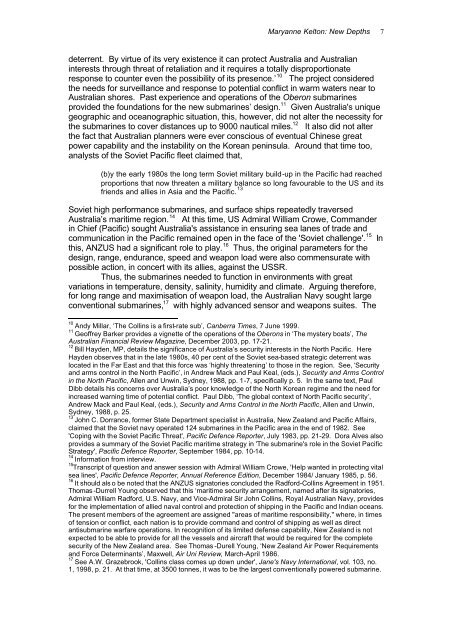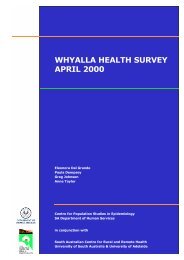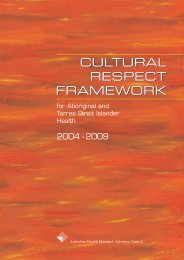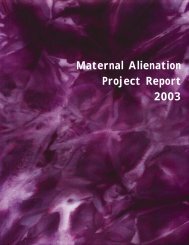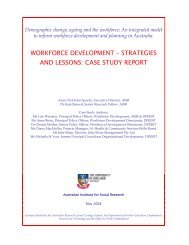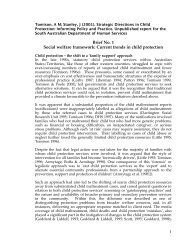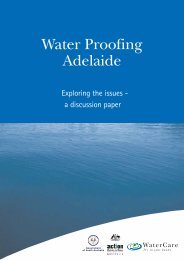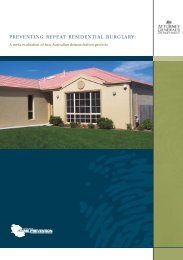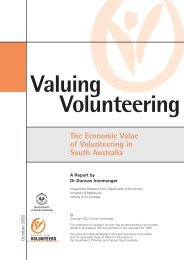New Depths in Australia-US Relations: The Collins Class ...
New Depths in Australia-US Relations: The Collins Class ...
New Depths in Australia-US Relations: The Collins Class ...
You also want an ePaper? Increase the reach of your titles
YUMPU automatically turns print PDFs into web optimized ePapers that Google loves.
Maryanne Kelton: <strong>New</strong> <strong>Depths</strong> 7deterrent. By virtue of its very existence it can protect <strong>Australia</strong> and <strong>Australia</strong>n<strong>in</strong>terests through threat of retaliation and it requires a totally disproportionateresponse to counter even the possibility of its presence.’ 10 <strong>The</strong> project consideredthe needs for surveillance and response to potential conflict <strong>in</strong> warm waters near to<strong>Australia</strong>n shores. Past experience and operations of the Oberon submar<strong>in</strong>esprovided the foundations for the new submar<strong>in</strong>es’ design. 11 Given <strong>Australia</strong>'s uniquegeographic and oceanographic situation, this, however, did not alter the necessity forthe submar<strong>in</strong>es to cover distances up to 9000 nautical miles. 12 It also did not alterthe fact that <strong>Australia</strong>n planners were ever conscious of eventual Ch<strong>in</strong>ese greatpower capability and the <strong>in</strong>stability on the Korean pen<strong>in</strong>sula. Around that time too,analysts of the Soviet Pacific fleet claimed that,(b)y the early 1980s the long term Soviet military build-up <strong>in</strong> the Pacific had reachedproportions that now threaten a military balance so long favourable to the <strong>US</strong> and itsfriends and allies <strong>in</strong> Asia and the Pacific. 13Soviet high performance submar<strong>in</strong>es, and surface ships repeatedly traversed<strong>Australia</strong>’s maritime region. 14 At this time, <strong>US</strong> Admiral William Crowe, Commander<strong>in</strong> Chief (Pacific) sought <strong>Australia</strong>'s assistance <strong>in</strong> ensur<strong>in</strong>g sea lanes of trade andcommunication <strong>in</strong> the Pacific rema<strong>in</strong>ed open <strong>in</strong> the face of the 'Soviet challenge'. 15 Inthis, ANZ<strong>US</strong> had a significant role to play. 16 Thus, the orig<strong>in</strong>al parameters for thedesign, range, endurance, speed and weapon load were also commensurate withpossible action, <strong>in</strong> concert with its allies, aga<strong>in</strong>st the <strong>US</strong>SR.Thus, the submar<strong>in</strong>es needed to function <strong>in</strong> environments with greatvariations <strong>in</strong> temperature, density, sal<strong>in</strong>ity, humidity and climate. Argu<strong>in</strong>g therefore,for long range and maximisation of weapon load, the <strong>Australia</strong>n Navy sought largeconventional submar<strong>in</strong>es, 17 with highly advanced sensor and weapons suites. <strong>The</strong>10 Andy Millar, ‘<strong>The</strong> Coll<strong>in</strong>s is a first-rate sub’, Canberra Times, 7 June 1999.11 Geoffrey Barker provides a vignette of the operations of the Oberons <strong>in</strong> ‘<strong>The</strong> mystery boats’, <strong>The</strong><strong>Australia</strong>n F<strong>in</strong>ancial Review Magaz<strong>in</strong>e, December 2003, pp. 17-21.12 Bill Hayden, MP, details the significance of <strong>Australia</strong>’s security <strong>in</strong>terests <strong>in</strong> the North Pacific. HereHayden observes that <strong>in</strong> the late 1980s, 40 per cent of the Soviet sea-based strategic deterrent waslocated <strong>in</strong> the Far East and that this force was ‘highly threaten<strong>in</strong>g’ to those <strong>in</strong> the region. See, ‘Securityand arms control <strong>in</strong> the North Pacific’, <strong>in</strong> Andrew Mack and Paul Keal, (eds.), Security and Arms Control<strong>in</strong> the North Pacific, Allen and Unw<strong>in</strong>, Sydney, 1988, pp. 1-7, specifically p. 5. In the same text, PaulDibb details his concerns over <strong>Australia</strong>’s poor knowledge of the North Korean regime and the need for<strong>in</strong>creased warn<strong>in</strong>g time of potential conflict. Paul Dibb, ‘<strong>The</strong> global context of North Pacific security’,Andrew Mack and Paul Keal, (eds.), Security and Arms Control <strong>in</strong> the North Pacific, Allen and Unw<strong>in</strong>,Sydney, 1988, p. 25.13 John C. Dorrance, former State Department specialist <strong>in</strong> <strong>Australia</strong>, <strong>New</strong> Zealand and Pacific Affairs,claimed that the Soviet navy operated 124 submar<strong>in</strong>es <strong>in</strong> the Pacific area <strong>in</strong> the end of 1982. See'Cop<strong>in</strong>g with the Soviet Pacific Threat', Pacific Defence Reporter, July 1983, pp. 21-29. Dora Alves alsoprovides a summary of the Soviet Pacific maritime strategy <strong>in</strong> '<strong>The</strong> submar<strong>in</strong>e's role <strong>in</strong> the Soviet PacificStrategy', Pacific Defence Reporter, September 1984, pp. 10-14.14 Information from <strong>in</strong>terview.15 Transcript of question and answer session with Admiral William Crowe, 'Help wanted <strong>in</strong> protect<strong>in</strong>g vitalsea l<strong>in</strong>es', Pacific Defence Reporter, Annual Reference Edition, December 1984/ January 1985, p. 56.16 It should als o be noted that the ANZ<strong>US</strong> signatories concluded the Radford-Coll<strong>in</strong>s Agreement <strong>in</strong> 1951.Thomas -Durrell Young observed that this ‘maritime security arrangement, named after its signatories,Admiral William Radford, U.S. Navy, and Vice-Admiral Sir John Coll<strong>in</strong>s, Royal <strong>Australia</strong>n Navy, providesfor the implementation of allied naval control and protection of shipp<strong>in</strong>g <strong>in</strong> the Pacific and Indian oceans.<strong>The</strong> present members of the agreement are assigned "areas of maritime responsibility," where, <strong>in</strong> timesof tension or conflict, each nation is to provide command and control of shipp<strong>in</strong>g as well as directantisubmar<strong>in</strong>e warfare operations. In recognition of its limited defense capability, <strong>New</strong> Zealand is notexpected to be able to provide for all the vessels and aircraft that would be required for the completesecurity of the <strong>New</strong> Zealand area. ’ See Thomas -Durell Young, ‘<strong>New</strong> Zealand Air Power Requirementsand Force Determ<strong>in</strong>ants’, Maxwell, Air Uni Review, March-April 1986.17 See A.W. Grazebrook, 'Coll<strong>in</strong>s class comes up down under', Jane's Navy International, vol. 103, no.1, 1998, p. 21. At that time, at 3500 tonnes, it was to be the largest conventionally powered submar<strong>in</strong>e.


